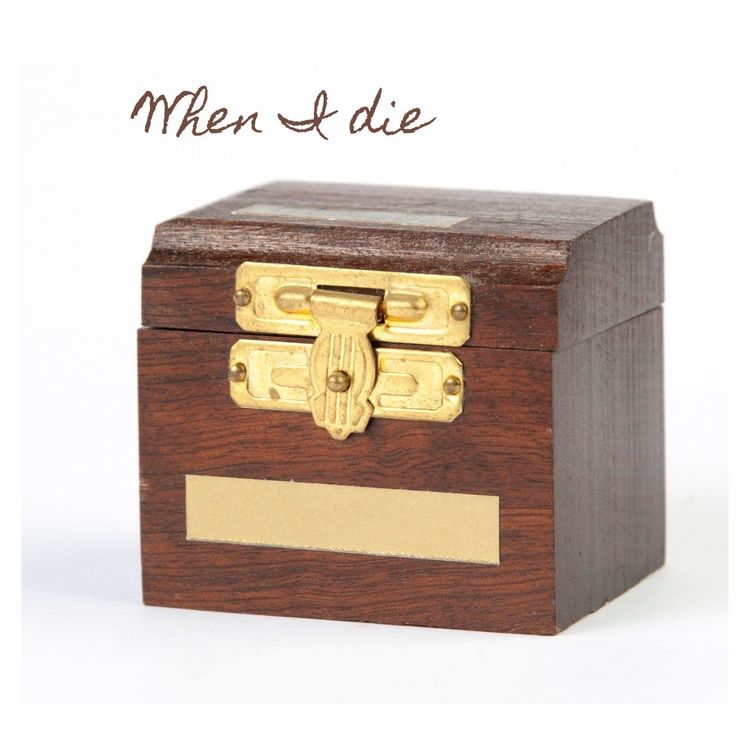Daddy was 81, when he died. This heartbreaking news left us struggling to imagine a world without our father. My sister and I went to clear his home in the retirement community where he lived, just a few days after his death. When we arrived, we didn't know what to expect. What we found warmed our hearts and calmed our minds. On his desk, in his office, was a small looking wood (looked like a recipe box) neatly arranged. Inside, he had carefully organized all of his notes, including the account numbers, pending transactions, and a bundle of other documents we would someday need to settle his affairs and distribute his belongings.
What Daddy had compiled was what he called his "When I Die" file, and it was so helpful during this difficult time, we wanted to share it. This could be the most critical thing you do before you depart. It may sound morbid, but creating a findable file, binder, cloud-based drive, or even shoebox where you store estate documents and meaningful personal effects will save your loved ones time, money, and suffering. Plus, there's a lot of imagination you can bring to bear that will give your "When I Die" file a deeper purpose than a list of account numbers.
His card file box didn't make it any easier for us to say goodbye to him, but it did make handling the material aftermath of his life a lot easier. If you've never had to do such a thing, spoiler alert: When someone you love dies, shutting down his or her life can take a year or more. When our Mother died after years of living with dementia, my sister and I had little insight into the particulars of her life. She had been organized enough to get her will and trust signed and notarized in her late 70s, but those documents only told part of the story. We had no idea where to find the prenuptial she assured us she'd written when she remarried five years before she died or how to unlock her phone and computer to find contact info for friends and colleagues we knew would want to be at her memorial.
Instead, we ended up sleuthing through her file cabinet and mail and requesting what seemed like a mountain of duplicate death certificates to prove to various companies that's he had died. (Make sure to order a dozen copies from the funeral home at the outset, as they'll be required to close everything—including social media accounts.)
But here's some good news: there is much you can do right now that will make your "When I Die" file simpler for you and your loved ones.
First, call the companies behind your cable, internet, cell phone, club memberships, and anything else that bills for services on an ongoing basis and add your partner or kids to the account as a joint owner. If billing accounts are not in both your and a loved one's name, your survivors will end up spending hours on the phone and in offices begging bureaucrats to shut them down or convert the accounts to their name so they can manage them. Think of every frustrating call you've had with your cell provider, and then multiply it by 10.
Think you're too young to worry about any of this? Can't find the time? It always feels too soon. Only one-third of Americans have completed even a primary advance healthcare directive. This document asks you to select a health care agent who can speak for you if you end up in the hospital and can't speak for yourself. But you don't have to pull your When I Die file together overnight. Maybe focus on one item per month for the next year. Gathering a whole death file together will make you a highly advanced American and a family hero.
Here are a few of the things you'll put into your "When I Die" file: An advance directive that's signed (and notarized if necessary), A will and living trust (with a certificate of trust), Marriage or divorce certificate(s), Passwords for phone, computer, email, and social media accounts. (We recommend using an online password manager to collect them all, sharing the master password with someone you trust, and then designating emergency contacts within the program who are allowed to gain access.) Instructions for your funeral and final disposition. An ethical will, Letters to loved ones.
The point of all this is to make a complicated thing like dying or loving someone who is dying less difficult. In that sense, creating a When I Die file is an act of love; it will always be too soon to tell your story and let people know how much they mean to you until it is too late.

